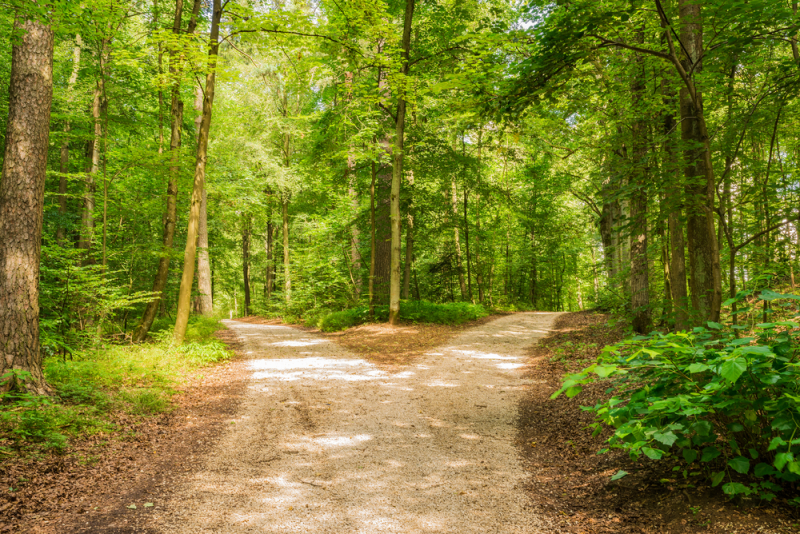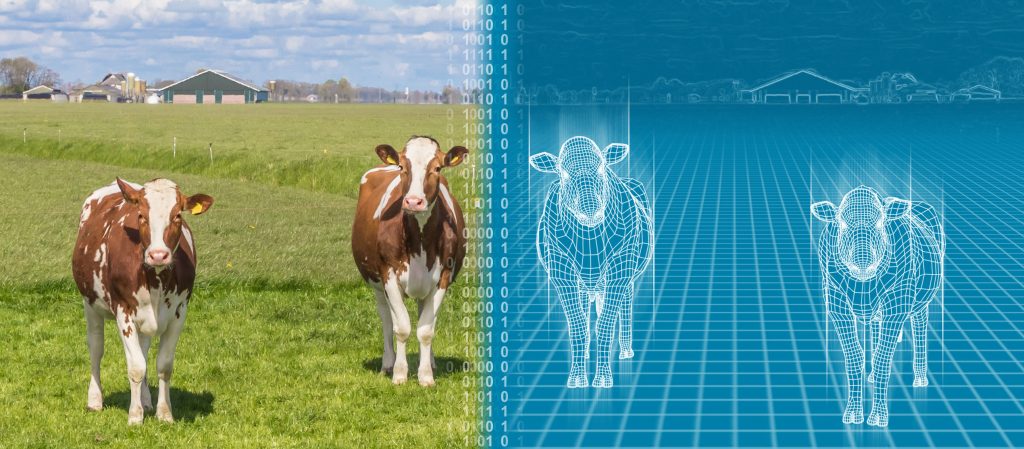Winning teams for future food production
As a student, I did a six-month internship at TropenBos. During my internship I lived in the rainforest in British Guiana. There I slept in a hammock and washed myself at the river that ran along the camp. I enjoyed the sight of the enormous diversity in the forest. It seemed that every tree or plant was there because its neighbour was there. A perfect balance between the different species, purely because the ecosystem is designed to use all available resources – nutrients, water and sunlight – effectively. And there are many important interactions: competition for life and death, but also mutual help. I help you, you help me. Between trees, but also between trees and lianas, trees and fungi, birds and insects. Can we take this dynamic system of the rainforest with its great diversity of species as an example for our future production systems?
Production systems in transition
Everyone knows the concerns about climate change. We know that too many pesticides and fertilisers are being used. As a result of the nitrogen crisis, we know about the excessive nitrogen deposition for nature and the environment. And, most urgently, biodiversity is declining fast. The loss of biodiversity is even so serious as to endanger the functioning of the planet. That is why we in the Netherlands are in the middle of a transition in agriculture, horticulture and cattle farming, and why forestry is also undergoing a transition. Biodiversity objectives must be an integral part of this transition because biodiversity leads to sustainable and resilient production systems. The idea here is that biodiversity leads first to better and more efficient use of the available nutrients and raw materials. It also increases resistance to diseases and pests. Biodiversity also creates a buffer against climate change. And – not to be forgotten – biodiversity provides a variety of well-adapted, robust species of crops, farm animals and trees. Making good use of biodiversity in future production systems can bring us great benefits.
Does monoculture provide the right basis?
To increase agrobiodiversity in plant production, we are working within Wageningen University & Research on mixed cropping, strip cropping and even pixel cropping. We are researching animal species and varieties that can play an important role in a more nature-inclusive circular agriculture. And we are working on the expansion and sustainable management of forests. Forests must make an important contribution to CO2 capture and provide raw materials for the circular economy. More diversity in tree species and varieties can increase the sustainability and vitality of forests.
The problem is that plant breeding and animal husbandry are still mainly focused on a limited number of species and varieties for specialised systems and mainly for monocultures. We use seeds bred for maximum production in a monoculture system. We breed our cattle to make them perform ‘top sport’, producing a lot of milk or meat. And we still plant many Norway spruces together, even though they are susceptible to the letter beetle, especially in dry summers.

Smart combining
Would it not be smart if we utilised the benefits of biodiversity in our production systems, whether in forestry, animal husbandry or agriculture? That we learn the biodiversity in the rainforest? In a system with smart combinations, crops complement and strengthen each other. Imagine if our cattle were bred to be part of the circular agriculture and the newly planted forests resilient and vital?
That would mean that in our new systems we would have to look for combinations of species and breeds. These have properties with which crops, livestock and trees can make an important additional contribution to a sustainable production system. In our grandparents’ time, onions still grew next to the carrots in the vegetable garden, because this kept the carrot fly at bay. The value of biodiversity lies in the interaction between species and optimally adapted varieties. Species take up different nutrients and together they do better. And one species blocks the spread of disease by another. In the case of soil-borne fungal diseases, there are even neighbouring plants that can stop the growth of the culprit in the host. The whole is then more than the sum of its parts. If we really want this, a change must take place. We can no longer improve the current varieties step-by-step but will have to look for ‘winning teams’. We will go beyond our grandparents’ carrot-onion combination and look for golden combinations in a forest, in a field and in the entire cycle. And our livestock has an important role in this.
Uncertainty inhibits
But of course, that is easier said than done. Breeding and breeding programmes are lengthy processes. However, some basic principles of the future systems are clear. To be precise: a healthy soil as a basis, an inherent resistance to diseases, fewer pesticides and artificial fertilisers, closing cycles, climate adaptation, integration of agriculture, nature and biodiversity at the level of the production system and in the landscape, and optimal and efficient use of biomass.
So high production is no longer the only goal. Yet it is not yet certain what these future demands on the agricultural and forestry systems will be. How are the systems connected? What combinations of species, varieties and genetic diversity are needed to take full advantage of the added value of biodiversity? How can we summarise these in the characteristics of crops, farm animals and trees? How do we ensure that biodiversity and genetic diversity are properly integrated into food and forestry production systems?
All in all, quite a set of impressive questions to which we will all need to find answers quickly; research, the suppliers of starting material (seeds and cuttings) and the entire food and forestry chain. What is certain is that we will only be able to make the change if we take a fresh look at combinations to benefit optimally from biodiversity.
“Instead of endless trials in the field or in the greenhouse, we can now make virtual plant combinations and test whether a pair has added value. In this way, we can use modelling sessions to look very specifically for golden combinations.”
Technology and models make a lot possible
We know from our grandfathers that onion and carrot make a good combination. In South America, there is a similar example. There, maize, bean and pumpkin are grown together as the ‘three sisters’. The straw cultivation trials are already showing promising positive interactions between crops: more stable yields, less need for disease control. We started with the monoculture varieties.
What if we were to optimise this even further with real ‘winning team varieties’? To grow faster as a winning team, the underground properties must be optimised. How can the different root systems take up nutrients from different layers of soil in a complementary way? How can the nitrogen from the air, fixed by a leguminous species like the bean, benefit corn or pumpkin? How can we ‘steer’ the underground root networks so that the spread of soil-borne diseases is hindered rather than accelerated? How can we attract the ‘enemy of the enemy’ by creating smart species combinations? And for animal production: which breeding goals and animal breeds are suitable or most valuable for specific production systems? Think of variations of nature-inclusive closed-loop systems with herb-rich grasslands, of closed-loop systems that make optimal use of side- or residual streams or of ‘mixed’ systems with crops, livestock, and trees.
Above all – and this is what scientists always want – how can we generalise the findings from our trials? We do not have to keep reinventing the wheel for every combination. Wageningen researchers are good at modelling plants: above ground, but recently also below ground. And instead of endless trials in the field or in the greenhouse, we can now make virtual plant combinations and test whether a pair has added value.
In this way, we can use modelling sessions to look very specifically for golden combinations; and even detect which characteristics underlie them. The computer calculates the diversity effects of a growing season in just a few nights. The results of these modelling sessions give us direction. In this way, we can search for a combination more intelligently and quickly. And perhaps we can even make our livestock more disease-resistant thanks to circular agriculture, with specific side streams.

How do we proceed?
The question that immediately follows is: who will provide the diversity of starting material? What are the consequences for breeding and breeding programmes? In the Breeding4Diversity project, we are working on the first steps. We would like to explore together – scientists and industry – ways to translate the requirements from a diversity of sustainable and resilient systems in agriculture and forestry into optimally utilised diversity in species and varieties of crops, farm animals and trees. We can only tackle these kinds of important questions together, with a diversity of expertise around the table.
We therefore invite parties to cooperate with us and to further develop the research agenda in this field. We can only make the transition to new production systems based on biodiversity in time if we take responsibility together. So that in ten years’ time, we will have more ‘winning teams’ than the old, familiar ‘onion and carrot’.
This blog was created with input from Liesje Mommer, Guusje Bonnema and Sipke Joost Hiemstra.
Lead photo: Jan Peter van der Hoeve
Join us in designing a circular bio-based and climate smart society. Go to Circular@WUR.


hello good evening, how are you, regarding the sentence “how can the nitrogen from the air, fixed by a leguminous species like the bean, benefit corn or pumpkin?”: a consumer in a grocery store probably knows some vegetables need a kind of fertilizer, however the regular npk -fertilizer [an artificial fertiliser] could become too expensive for a farmer with a piece of land of .25 ha because the production of such a fertilizer needs a lot of fossil energy. on the other hand the air consists of 78% nitrogen which automatically can be used by the leguminoseae, which means after the harvest of the bean no nitrogen fertilzer is needed for growing maize or pumpkin. the landowner of today should find out how to save the production costs of for example a bean – maize – pumpkin rotation cropping system. thank you for your attention, yours sincerely …